HALLIE EPHRON: As anyone who’s taken any of my writing workshops knows, I’m full of rules.
One of them is: “Don’t open with a cocktail party.” Of course I don’t mean that literally. I mean don’t overload the opening of your book by introducing too many characters too quickly. Don’t open with a crowd scene.
Even introducing a single character is heavy lifting–for both the writer and the reader. There’s the character’s name. Physical appearance. Relationship to the other characters you’re introducing. Quirks. The list goes on…. With their first appearance they need to make an impression. Introduce too many too fast and readers will choke. They won’t remember who’s who and might even stop caring.
My rules usually have the caveat: “Write well enough and you can break any rule in the book.”
Which brings me to a book I’m reading at the moment. It’s a huge bestseller written by a beloved author. And it opens by introducing about half dozen characters, each in a separate location with a variety of connections to one another. Fortunately, in short order one of them is murdered, culling the herd. But still, for about 20 pages it’s a slog remembering who’s who until everything meshes.
Do you think there’s such a thing as *too many characters too soon* and if your story requires it, how do you finesse it?
HANK PHILLIPPI RYAN: The very first book I ever tried to write, which did not get very far, was about the first female golf pro in Massachusetts, and how she solved a mystery about a deadly herbicide on the golf course. It was a brilliant idea. Maybe. But I didn’t know what I was doing. And I stopped.
Totally your case in point: the first chapter was a golf foursome on the course, as well as a caddy, and references to several other people. Truly, there were at least five people in the scene, none of whom you knew, as well as allusions to other people.
You absolutely had no idea who to care about.
But. I also just finished a book that has about a million characters from moment one, and some off-the-page characters referred to as well. But the writing was so immersive, and so fabulous, and I thought: “you know, this author is aware of what she’s doing, and she’ll let me know who I need to care about when the time comes.” And that turned out to be completely true. And the book is incredible.
But I so agree, Hallie. The rest of us are not Liane Moriarty and Big Little Lies. And I am very careful now not to overpopulate my first chapter.
JENN McKINLAY: I’m trying to think of a book that had a crowded opening scene that made me quit. Nothing is coming to mind, probably because I quit. LOL. I’m not a big fan of prose heavy openings either. I don’t want to read a description of snow falling for five pages.
As for me, I’m a master level eavesdropper so I love starting a book with dialogue as it takes the weight off the opening line and hopefully hooks the reader immediately. No more than three characters for the opening paragraphs and then it can expand.
RHYS BOWEN: One thing I hate is too many characters too soon. I find myself flipping back and forth: Who was Doug? Was he married to Serena? I was trying to remember if any of my books start with multiple characters but I can’t think of any.
In Farleigh Field had multiple protagonists and we jumped between several sites but I think they were all parallel stories going on until they all joined at the end. (At least that was what I wanted!)
Of course my two series are written in the first person so we always start seeing the world through the eyes of the protagonist and having her set the scene tor us. This makes it much easier.
LUCY BURDETTE: I have very little patience with too many characters. Most of the time I refuse to go back and look somebody up, I will either put the book down or else keep reading and hope it all becomes clear.
But Jenn and Rhys make interesting comments, maybe it’s easier with first person to keep the characters under control.
I had to go back and look at the opening of THE MANGO MURDERS, which will be out in August 2025. it does indeed start with a cocktail party! On a sunset cruise! However, before you ever get to the cruise and the party, there is quite a bit of Hayley Snow talking to set the scene.
I hope this works – I’m sure you will let me know:).
DEBORAH CROMBIE: The first chapter of my first book opens with only three characters. Smart, right?
Then, in chapter two, A COCKTAIL PARTY! Literally. What was I thinking?
Obviously I didn't know any better, but I seem to have navigated my way through it somehow. Still, many books later, I find scenes with a lot of characters the most challenging to write. Give me a good old descriptive passage or an internal monologue any day!
JULIA SPENCER-FLEMING: This is a timely question, Hallie, as I’m reading a book with a famously vast number of characters - ANNA KARININA.
Yes, one of my resoilutions was to broaden my reading to include classics I’ve missed. I’m reading the 2000 translation by Richard Pevear and Larissa Volokhonsky, and they translate the famous opening line as: All happy families are alike; each unhappy family is unhappy in its own way.
In the first eleven pages, we meet seven characters in person, name check the titular character, and are also told the household has an English governess, a cook, a coachman, a kitchen maid, and the now banished affair partner, the French governess. It feels crowded, which is perfect, because the household of Prince Stepan Oblansky is crowded to the point of intrusiveness, just as, we will see, the society he and his family live in is crowded and intrusive. There never seems to be enough space for people to just be themselves.
Technically speaking, all these character introductions work because they come through Stepan’s point of view. Everyone is described in terms of how they relate to him: his wife, his favorite child, his sister, his valet. It gives the reader a solid framework to slot characters into place. And yes, I was brave and decided to plunge in without reading the cast of characters, so I was relying on Tolstoy to not let me down.
BTW, I’m really enjoying it so far. It’s much more lively than I thought it would be.
HALLIE: So how about the rest of us? Which writers manage to defy the odds and keep you turning the pages even when they introduce a plethora of characters in short order?










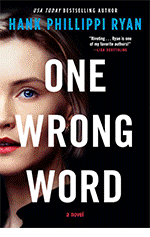
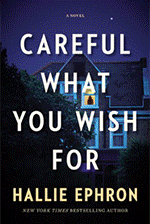
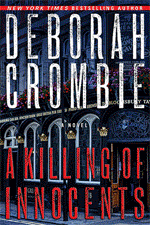
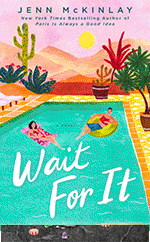
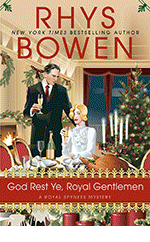
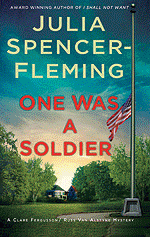
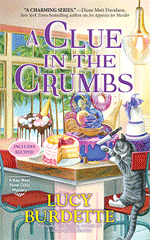
Actually, I don't usually have much of a problem with having a lot of characters being introduced; I figure the author will explain in due time and I just keep reading . . . .
ReplyDeleteYou're every author's dream reader, Joan.
DeleteI never noticed it as the author made the introductions seamless
ReplyDeleteIt's like a little miracle when it works.
DeleteI have also quit on books (by perhaps lesser authors) who confuse me with too many characters at the start.
ReplyDeleteThis is a timely post, because I sent first scenes for a new project with four POVs (only one each scene, mind you) to my agent. She replied by saying she was a little confused about who was who. Time to rework that and make sure it's not a cocktail party!
Makes one realize how important the casting director is in a film - because I always notice how a *distinctive* physical appearance of each character helps me follow the plot line.
DeleteInteresting that you mention this, Hallie. Recently, I was watching a mystery on television and two key women looked so alike that I was never sure which character was on the screen. I thought perhaps it was a hint re their being related, but no... just poor casting. (Full disclosure: I did this with two women in my Paris mystery... so relieved this error was caught!)
DeleteIn my freelance editing work, I often come across a character who is named, but appears only once. It's interesting how many writers want us to know the name of the taxi driver, the woman asking directions, the neighbor, despite that single mention.
Opening scenes with lots of characters remind me of advice in a writing class I took decades ago: Eat your dinner before you get your cherry pie. In other words, keep going; there will be payoff--dessert--for all your effort. Writing an opening scene wasn't what the instructor was referring to, but it fits herwi.
ReplyDeleteJulia, in my 20"s, I also read the classics, including Anna Karenina, which I used to reread every five years or so. It's been a long time, might be a book I need to revisit. My perspective has shifted a lot since last time.
It's a gift when a book you read and loved ages ago STILL engages you decades later.
DeleteKaren, I've found a number of books that either bored me or seemed incomprehensible when I was in my teens and twenties magically have much, much more to offer now I'm in my sixties!
DeleteIsn't it interesting to see how life experience changes a reading experience, too?
DeleteI knew exactly what you meant when I read the title of this blog post. It is a pain to wade through figuring out a whole cast of characters right off the bat. Now who is that again…paging back.. ah, yes. But I thought he….paging back… oh, I guess not. A family tree thing or a list of characters at the front is a little helpful, but you still have to stop reading and look back.
ReplyDeleteAnd heaven help you when the character NAMES are similar, too. A problem when it's a big family you're writing about.
DeleteHallie, that was a comment I just wanted to make!
DeleteSo agree no cocktail parties. Read one of those just before Christmas. Did get through it by writing each characters name and page number down on the front pages of the book. It was an early book of a series … I had read the most recent a year ago and really enjoyed it. But, now, just “no more” of this author. Elisabeth
ReplyDeleteI agree, you know you're in trouble when you need to make LISTS of character names and distinguishing features.
DeleteI've been known to make lists when there are too many characters introduced. If the book is engaging I will usually be able to keep track of them and their relationships quickly. Once in awhile I'll be looking at my "cheat sheet" for too long.
ReplyDeleteSome authors are just really good at it. And it's the advantage of reading books in a series because you already know the repeating characters.
DeleteWhy would I want to stop reading and make or review a list, is what I would say to the author. Does writing have to be that difficult? Can you see I read for pleasure, not a physics book event?
DeleteGood reminder! I start with my protagonist and her business associate having a face to face conversation. There might be other, unnamed, peripheral characters in the scene, but their dialogue sets the action in motion.
ReplyDeleteThat can work. Especially when there's a little conflict in the conversation, not just relaying information.
DeleteNo "cocktail parties" near the beginning is an excellent rule that I confess I haven't thought about. I have to be especially careful because all my characters have Germanic names and Swiss-German nicknames (although I usually don't introduce those until later). I get confused when I'm reading something with too many people at the beginning; although by the end, I loved Liz Moore's The God of the Woods, it started out like that for me, jumping from time to time and character to character.
ReplyDeleteSomething a surprising number of authors do is call more than one important character a name that starts with the same sound--not just "T" but "Ti," for example. I go over my first and last names and nicknames carefully to be sure I don't do that!
I appreciate your efforts regarding names, Kim. I find it very confusing when the names of characters are similar and/or start with the same letter or sound. So many names out there to choose from! Do it wisely with your reader in mind, dear author.
DeleteBook Club next month is 'The Art of Hearing Heartbeats'. It was so hard to listen-to-read as all the names were Chinese, and to my ear sounded the same. Who was who? Maybe it was easier in print?
DeleteKim, I do the same thing. I have a Name Bible of all my characters and I use it to check if I'm giving new characters too-similar names. I've been consciously trying to use less-frequently-seen letters at the start of names - Xavier, Quinn, Olivia.
DeleteI've followed the nicknames in your novels easily, the way you introduce the naming conventions helps slot them into place.
Two of James Michener's epics have that problem, with several generations of mostly male characters with the same name. Alaska and Colorado. I was ready to tear my hair over it. He included genealogy charts, but it was such a pain to leave the story to try to figure out who the heck he was talking about.
DeleteI’m glad to see other people have a problem with multiple characters’ names beginning with the same first (and yes, Kim, sometimes first and second) letter. I thought it meant that I was either a skimmer as a reader or not very bright (which could still be true!), but I get so confused when authors do that. I mean, aren’t there enough names in the English language that you can avoid this? Love your idea of a Name Bible, Julia! — Pat S
DeleteThat's why my only attempt at a mystery didn't work. The lead got off a bus and walked into an Insurance office. She was a new employee and met all the key players in the opening chapter. Too many peeeeeople! Someday Resistance to roses will be revised.
ReplyDeleteMy golden rule is to read 50 pages before I decide to stop. I have problems starting in the middle of a series where everyone and the reader it is assumed already know everyone. The other that comes to mind is the locked room genre. I am reminded of Tutton's The last murder at the end of the world. In this case, I was a confused, dogged reader. Everyone was related to everyone and they all sorta looked alike. My poor wee brain ..at the end I gave it many stars. In my opinion, the hook was 'what is going on? rather than who did it?
Well said: "the hook was 'what is going on? rather than who did it?" But I really do think the author should make it EASY for the reader to figure out WHO's talking and WHO are they talking about etc.
DeleteHallie, I hated Wolf Hall for not having speech attribution. I noticed she added it in the two other volumes of the trilogy.
DeleteThis discussion is very interesting. Before I began reading this blog, I never thought about how characters are introduced. I never would have dreamed of blaming the author for me not remembering who people are. It happens to me in real life, too. When it comes to books, I just make lists. Since the pandemic, I also keep notebooks with short synopses of books so I can refer back, especially if the book is part of a series. My memory is not what you it was, or maybe it never was anything special to begin with.
ReplyDeleteI have the same problem, Judy - and it's a wise crime fiction author who recognizes that MANY of their readers are us older folks.
DeleteWhile I am happy to be an active reader, I don't want to work so hard that the reading is more memory-building exercise than pleasure. Like Goldilocks, I want the balance between interesting/complex plot and well drawn (and named) characters to be just right -- give me too much to deal with on either count in the first few pages and I'll give up. Life is too short.
ReplyDeleteIndeed it is. And too many other books on the shelf beckoning to be read.
DeleteThank you for this post--it's so interesting to me! I actually like big family novels where I have to refer to the family tree to remember who's who. I loved Anna Karenina and could see why it is considered a great novel. However, with George RR Martin's sweeping series, I gave up trying to remember. It was just too much--so I enjoyed each chapter in the moment without trying to figure out how it related to the other 3 700 page books I had read.
ReplyDeleteFile under: Pick your battles :-)
DeleteThere's one author whose books are continuously praised... I enjoyed a few of them, but I think I'd be more inclined to read the others if I didn't have to draw and refer back to a little map of how the characters related to each other!
ReplyDeleteI know what you mean.
DeleteI like Jenn's idea of opening with a great dialogue, as long as we know who is saying what. As their conversation continues we can also learn some extra bits about them, and about another person if that is the subject of their conversation.
ReplyDeleteAlong with too many characters all at once, there is a problem when some authors refer to their characters by more than one name. Lately I've read several reader reviews where that was a major complaint. I don't think I had problems with it -I knew that Chief was also Stella, but I can see where some people might get confused.
Great topic, Hallie!
I hate the too-many-names thing, too. Or when the author refers to "the police chief" when up to now it's been "Stuart" or "Mr. Davis"... or...
DeleteRule #38: Open with an orgy. You may find yourself with a new (and totally different) audience.
ReplyDeleteThey might not even care that much about who's who, Jerry. Only about who's doing what. :)
DeleteHahaha!
DeleteI just realized that my latest, The Rose Arbor, has a prologue with an ensemble cast before we focus on the main character. Since it’s up for an award it can’t be too bad!
ReplyDeleteI loved that village scene, Rhys! I think it works so well because what the reader is really following is the news (and it's effect on the town) as it wends from one person to another
DeleteLike I've said, write well enough and you can break ANY rule. And Rhys, you are an amazing writer.
DeleteI am reading a series, which I really like, BUT I cannot imagine opening book 3 or 5 or anything past book 1 and reading past the first chapter. Even my first reading of the book was difficult to get to the quarter mile mark as there were so many characters AND all introduced in short snippets. Now that I understand the author’s writing style and know (and love) the characters, I really enjoy it. I am reading this as an e-book. I do not flip back to reread to make me understand what is going on.
ReplyDeleteAgatha Christie, who I loved as my introduction to mysteries – so many characters, and since I was reading a book-book, much flipping back to reread the characters, and time and space. Loved the books, but don’t know as I grow older, if I still would – too much to sort out in my feeble brain.
I also dislike it when the victim does not get killed until too far into the book. Sure, we need to know the person, but hurry up. I also dislike when a new character is brought into the story half way through, when to me it is just argghhh.
I agree with Hank, that you need to have someone to care about, otherwise the book is not likely to be finished, or if plowed through and read, will likely not get a good personal review, but more a “why did I bother?” Oh, and Rhys reminded me that authors need to be careful with their names. Most, if not all of them need to have a different first letter name. Don’t give me characters named Sarah, Sally and Susan and expect me to remember who they are – they are just a grey mass.
One more thing. I find the hardest book to read is the first book of the series, where we are being introduced to all the characters good and bad. By book 2, I am aware of the important characters in this series and can settle down and enjoy the murder. That said, sometimes the author will really surprise me, and arrest a character who I have invested in in an earlier book (Louise Penny). Maybe this is why I am more comfortable with series, than stand-alones.
Margo, I'm almost embarrassed to admit it, but at this stage in my life I prefer a good TV or movie adaptation of a Christie novel to the actual book! It's so much easier to follow her large casts of characters when you can see them distinctively clothed, coifed and portrayed by actors.
DeleteMargo, there two books in particular that so disappointed me (ok, made me mad) where by the end of the book I still didn't care about the characters, no redemption of any of them. In fact, the last murder victim, with whom I guess I was supposed to have sympathy, just made me feel like his stupidity and foolishness led him to his fate. Both books were wildly popular, and one had a movie starring Ben Affleck. The other was named after one of the elements in a book, as what the book is about. Yes, I threw them both across the room.
DeleteOh, Kathy, thank you for a fun memory of book tossing. In law school … where all the books are thick and heavy… the Torts Case book regularly flew across my room and whacked the wal. Fortunately for neighboring apartments the walls were thick dampening the noise. Take care. Elisabeth
DeleteWhat I think is more difficult to keep straight is characters whose first names are very similar. An example would be Milo, Mila or Lydia and Linda. I always think aren't there more first names to use than these similar names.
ReplyDeleteYou're so right, Lynn - which is why a lot of us are super careful NOT to even hav two characters with names that start with the same letter.
DeleteAlthough useful, I kind of get worried when a book contains a long list of characters.
ReplyDeleteSo many names and relationshops to remember!
HALLIE: I think I recognize the book that you are reading.
P.S. Will remember to look for the cocktail party chapters in the upcoming books by LUCY & DEBS!
What a terrifying thought—making a reader feel like they have to make a list of characters? Gaaah. I’m wondering if sometimes readers get too panicked—just a thought here—worrying about understanding EVERYTHING instantly. In real life, we meet people every day, and we don’t need to write them all down. Sometimes you have to let the story unfold, and immerse yourself, and then trust that the author will let you know—just like life—what is important.
ReplyDeleteOf course, authors CAN make it easier and more pleasant:-)
Oh, but, Hank, some folks like me should write all those names down! I have always lacked the ability to remember a name while easily remembering faces and “personality”. Very frustrating to see a person I’ve met, talked, and enjoyed being with…and oops! no name. Elisabeth
DeleteI will read anything--a cocktail party scene, a big sprawling family--as long as the author brings me into the story. I don't take notes, but I've been known to flip back to character lists and that's okay. A good story well told is worth a little work from me. But, I'll toss a book aside in a heartbeat if the writer hasn't snagged my interest, if I'm bored and couldn't care less about Susan, Sally, and Simon.
ReplyDeleteAs someone earlier said in words to this effect: You have to make me CARE about the characters.
DeleteReminded me of when I entered a short story writing contest several years ago. I had TOO MANY chanracters in the short story. The winner of that writing contest had maybe two characters in the entire story! Looks like I have More experience as a reader than a writer.
ReplyDeleteNever thought about the cocktail party scene to introduce the novel. Do they have cocktail parties in England or is it a different name for a party? As I recall, the cocktail was an American invention, right?
Helpful to know who the characters are.
I flip back and forth in a story if there are a lot of characters and they seem to be worth knowing.. It doesn’t always matter where they appear in the story. If they are only mentioned a couple of times in the beginning and then reappear in the middle of the story in a more prominent role, it is easy to forget their background and why I should remember them
ReplyDeleteA cast of characters is very helpful to differentiate who’s who. It seems to be more likely to be used in historical novels where there may be servants or people who have different titles.
the first book I ever wrote, and which was published, opens at a large gala, but I think it works because it's told in the first person, and the character isn't busy introducing lots of people. She does have to respond to one person after another, but those people are very different from each other. The book I'm writing now starts at a large party but again it's in the first person and the protagonist is focused on a couple of individuals who will be pivotal throughout. But the rest of the partygoers together make the scene. So, I think it works, but I guess we'll see!
ReplyDeleteAs I said in a comment above (and many of you have already said), I don’t like books with the same first initial for multiple characters. I don’t mind if an author gives a “cast of characters” at the beginning. It’s nice to have one place to go to figure out who’s whom or maybe their relationship to each other. I am also fine without it. What I find myself doing - and this could be due to age or, hopefully more likely, the fact I read more than one book at a time - is using the search feature on my Kindle to find the first time the character was introduced. I read e-books most of the time now (because of the ease of checking out a book as soon as I finish a previous book and that I always have a book with me as long as I have my phone) so I use the search feature a lot. I like Flora’s comment, “A good story well told is worth a little work from me.” — Pat S
ReplyDeleteI have to admit that a list of characters at the beginning of a book will put me off. Hmm, why am I going to need this list, instead of just being introduced naturally? Also, I find one of the big downsides to reading ebooks is the difficulty in going back to refresh your memory on a character introduced earlier in the story.
ReplyDeleteAnd arggh, I know I have too many characters with names beginning with same letters/sounds, but their names seem to have stuck to them!
I am with you, Debs! I NEVER read those lists or refer to them. That's the author's job, to lead me through the story and the introductions.
DeleteI try not to start my books with too many characters and I don't like writing scenes with a plethora of people. Too much "he said, she said" or so-and-so said to keep the dialogue straight. I think I've done as many as five and that was tough. I prefer to introduce characters as they are needed.
ReplyDeleteI'm okay with books that have multiple POV characters - as long as those characters are well drawn and each one has a "voice" even though it's a third-person close writing. Every character needs to be a full person.
Kathy, don't feel too bad. I'm only 51 and I'm done with the "I never read this book and I should" philosophy. Do I *want* to read it? I will. But if the premise puts me off, forget it. Too much time spent reading books I wasn't really interested in when I was in college.
ReplyDeleteI have quit on a lot of books that have too many characters.
ReplyDelete